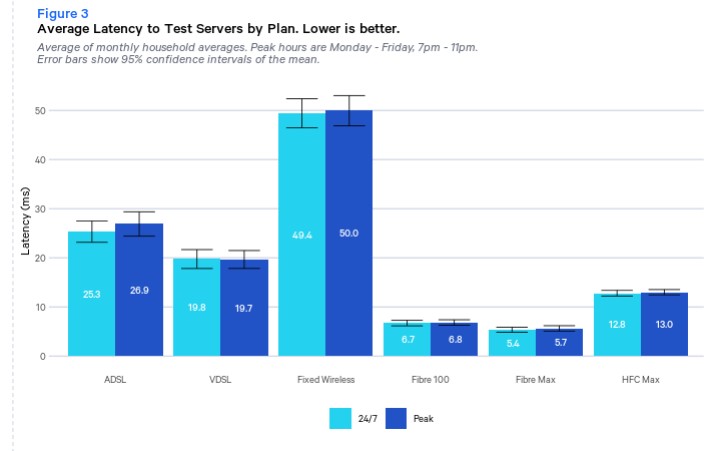Upload and download speed why both matter
Not so long ago, when at home we were mostly consuming content – watching Netflix and YouTube and scrolling through social media.
3 mins average read time

If you’re a regular Chorus blog reader you’ll know that the type of broadband you choose and your home’s WiFi setup can affect the experience you have online. But there’s another factor that can impact how fast you’re browsing, buying or chatting online. That factor is latency.
Latency (sometimes called ‘ping’) is the time it takes for a packet of data to get from one point to another and back again. In other words that’s the time it takes for your command to get from your computer, to the host website, and back to your computer in the form of an action. For example if you’re buying something on sale from your favourite site, it’s the time it takes between hitting “okay” and the “your purchase is successful” message. If you’re experiencing low latency that means you’re humming along nicely. But if a network has high latency, you may see some delays in the time it takes for webpages to load onto your screen as you click through them.
Timing is everything
When you’re doing your internet banking the slower response rate caused by high latency may mean those funds are in your account for a couple of seconds longer. However, if you’re bidding for something on TradeMe or trying to buy tickets for your favourite concert before they sell out, then that delay may mean you miss out. Real time applications are generally the most affected by latency - a good example is video calling. With job interviews, important meetings and even sales pitches being done over video calls now, a glitchy picture or freezing mid sentence is definitely not ideal. Another latency sensitive application is playing online games, where many a gamer will know latency can be the difference between life and death – online only of course!
Because it has such an effect on your online experience, latency is one of the factors we use to measure network performance. You’ll see it turn up as “ping speed” when you do a speed test via a service such as Ookla and is measure in milliseconds. The higher the number, the higher the latency rate. The Measuring Broadband New Zealand report surveys the latency rates of the different types of broadband available, along with other performance measures, on a quarterly basis.

Fibre regularly has the lowest; meaning it has the fastest response rates, followed by VDSL then ADSL. Wireless broadband has high latency in comparison, with latency twice as long as VDSL and ten times that of fibre.
Other factors that can increase latency are the location, or speed of the website you’re communicating with, the age of your computer and how up to date your software is, and the capacity of your modem and how well your home wifi is operating.
Latency is being talked about more and more as we look towards the future and new technologies such as driverless cars. While it’s annoying missing out on a coveted TradeMe item, any lag in communication could result in disaster on the roads. While driverless cars are still in their infancy, companies and governments are looking at ways to get latency rates for driverless cars to one millisecond – that’s one thousandth of a second.
One thing’s for sure, as our reliance on broadband grows, so too do our expectations so it pays to know how your broadband options differ when it comes to latency and other performance measures.

Not so long ago, when at home we were mostly consuming content – watching Netflix and YouTube and scrolling through social media.

Getting the best out of your broadband isn’t all about the plan you’re on. Even with the best connection in the world, you can run into problems getting a great broadband experience.

When it comes to broadband basics, speed is an important factor as it is linked to reliability - a slow connection can’t be trusted to keep you and your family securely online without interruption.


